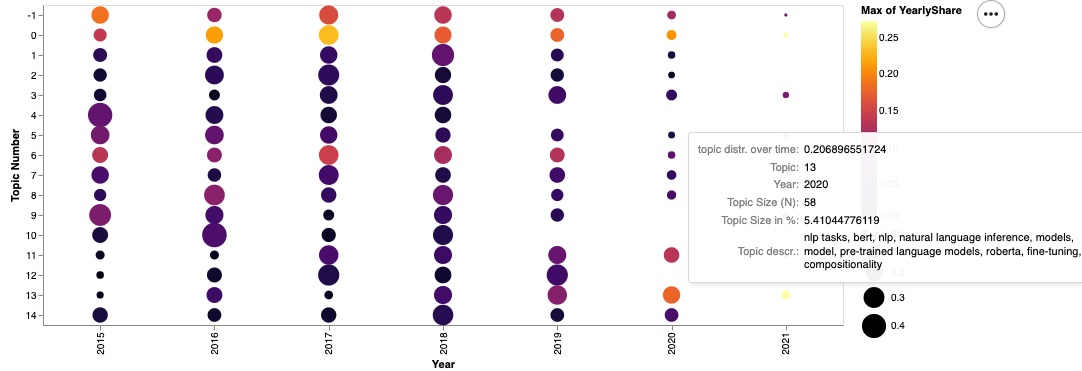metadata
license: mit
widget:
- text: >-
The dominant sequence transduction models are based on complex recurrent
or convolutional neural networks in an encoder-decoder configuration. The
best performing models also connect the encoder and decoder through an
attention mechanism. We propose a new simple network architecture, the
Transformer, based solely on attention mechanisms, dispensing with
recurrence and convolutions entirely. Experiments on two machine
translation tasks show these models to be superior in quality while being
more parallelizable and requiring significantly less time to train. Our
model achieves 28.4 BLEU on the WMT 2014 English-to-German translation
task, improving over the existing best results, including ensembles by
over 2 BLEU. On the WMT 2014 English-to-French translation task, our model
establishes a new single-model state-of-the-art BLEU score of 41.8 after
training for 3.5 days on eight GPUs, a small fraction of the training
costs of the best models from the literature. We show that the Transformer
generalizes well to other tasks by applying it successfully to English
constituency parsing both with large and limited training data.
- text: >-
Text-to-image generation has traditionally focused on finding better
modeling assumptions for training on a fixed dataset. These assumptions
might involve complex architectures, auxiliary losses, or side information
such as object part labels or segmentation masks supplied during training.
We describe a simple approach for this task based on a transformer that
autoregressively models the text and image tokens as a single stream of
data. With sufficient data and scale, our approach is competitive with
previous domain-specific models when evaluated in a zero-shot fashion.
NER model based on allenai/scibert_scivocab_cased
Fine-tuned using the SciERC Dataset to identify scientific terms:
- Task: Applications, problems to solve, systems to construct. E.g. information extraction, machine reading system, image segmentation, etc.
- Method: Methods , models, systems to use, or tools, components of a system, frameworks. E.g. language model, CORENLP, POS parser, kernel method, etc. • Evaluation Metric: Metrics, measures, or entities that can express the quality of a system/method. E.g. F1, BLEU, Precision, Recall, ROC curve, mean reciprocal rank, mean-squared error, robustness, time complexity, etc.
- Material: Data, datasets, resources, Corpus, Knowledge base. E.g. image data, speech data, stereo images, bilingual dictionary, paraphrased questions, CoNLL, Panntreebank, WordNet, Wikipedia, etc.
- Other Scientific Terms: Phrases that are scientific terms but do not fall into any of the above classes E.g. physical or geometric constraints, qualitative prior knowledge, discourse structure, syntactic rule, discourse structure, tree, node, tree kernel, features, noise, criteria
- Generic: General terms or pronouns that may refer to an entity but are not themselves informative, often used as connection words. E.g model, approach, prior knowledge, them, it...
Training
- Learning Rate: 1e-05
- Epochs: 10,
Performance
- Eval Loss: 0.401
- Precision 0.577
- Recall: 0.632
- F1: 0.603
Colab
Check out how this model is used for NER-enhanced topic modelling, inspired by BERTopic.
Use
from transformers import AutoTokenizer, AutoModelForTokenClassification
from transformers import pipeline
tokenizer = AutoTokenizer.from_pretrained("RJuro/SciNERTopic")
model_trf = AutoModelForTokenClassification.from_pretrained("RJuro/SciNERTopic")
nlp = pipeline("ner", model=model_trf, tokenizer=tokenizer, aggregation_strategy='average')
Cite this model
@misc {roman_jurowetzki_2022,
author = { {Roman Jurowetzki, Hamid Bekamiri} },
title = { SciNERTopic - NER enhanced transformer-based topic modelling for scientific text },
year = 2022,
url = { https://huggingface.co/RJuro/SciNERTopic },
doi = { 10.57967/hf/0095 },
publisher = { Hugging Face }
}


